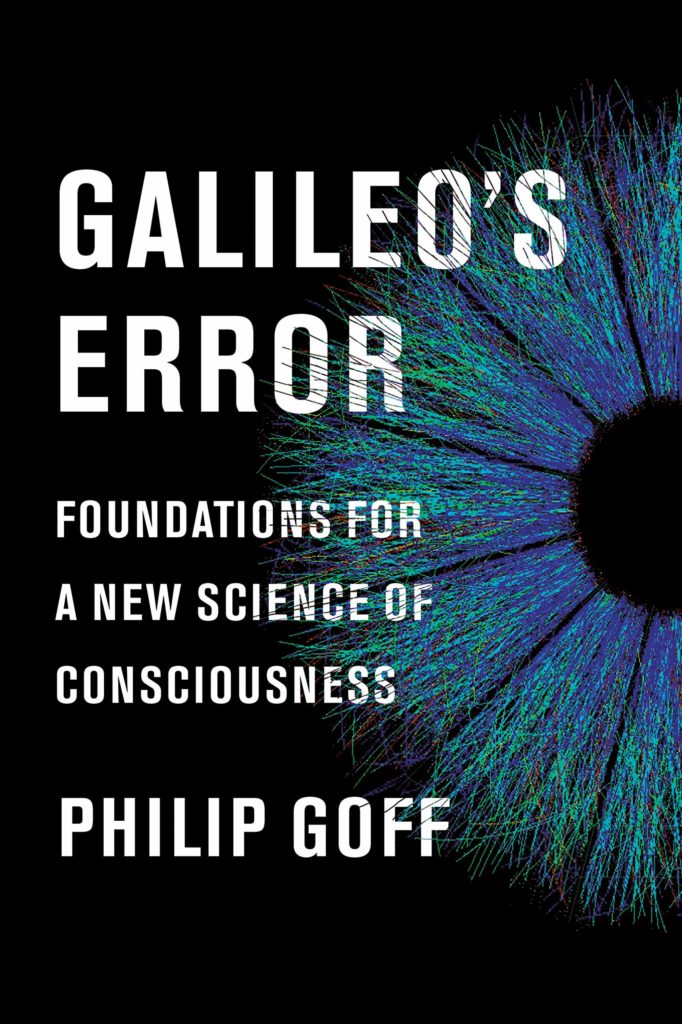- Visitor:26
- Published on:
How to Solve the Problem of Consciousness
In human beings, consciousness is a sophisticated thing, involving subtle and complex emotions, thoughts, and sensory experiences.

When I was a philosophy undergraduate, in the dying embers of the twentieth century, we were taught that there were only two options for dealing with consciousness. Either you turned to physical science to explain consciousness, in which case you were a materialist, or you thought consciousness existed outside of the physical realm altogether, in which case you were a dualist. As far back as I can remember I have been obsessed with the problem of consciousness, and so from day one of student life I decided to read everything I possibly could on these two “live options” for explaining consciousness.
In my first year of university, I decided I was a committed materialist. The wealth of scientific support for placing consciousness in the brain seemed to rule out any other option. I passionately debated religious dualists in support of the identity of the mind and the brain, declaring that any other option lacked scientific credibility.
But the more I thought about the arguments, the more I came to doubt the coherence of conventional materialism. The picture of the universe painted by physical science seemed to have no place for the subjective qualities of experience. I decided an uncompromising rejection of the reality of consciousness was the only consistent materialist position.
Sadly, pretending you’re not conscious is a tough act to pull off, and as my second year wore on, I increasingly felt a peculiar kind of cognitive dissonance. I began to feel dishonest when presenting my case in discussions. Even alone I felt a certain insincerity in myself, an uncomfortable case of what the existentialists called “bad faith.”
It all came to a head one evening as I sat in a noisy crowded bar, feeling the banging beat of the music in my chest as I enjoyed the taste of lager and the rush of nicotine from my first cigarette of the evening (smoking in bars was legal in those days), and I was suddenly overcome with a vivid sense of how real these conscious experiences were, and of their clash with my official worldview. I pushed my way out of the bar and stood in the cold rain with my eyes closed. I couldn’t deny it anymore. I’d already accepted that if materialism was true, then I was a zombie. But I knew I wasn’t a zombie; I was a thinking, feeling human being. I could no longer live in denial of my consciousness.
After that transformative experience I became something of a closet dualist. The weight of the scientific case against dualism still bothered me deeply, and—a little unfairly in hindsight—I associated dualism with the religious upbringing I had rejected at the age of fourteen by refusing to get confirmed Catholic, much to the consternation of my matriarchal grandmother. In my final-year dissertation, I reluctantly argued that the problem of consciousness could not be resolved. Feeling disappointed and dejected, I decided I’d had enough of philosophy.
I spent the following year teaching English as a foreign language in Kraków in Poland. For the first few months, I studiously avoided philosophy, trying to lose myself in novels and popular science. But as time went on, I couldn’t help myself and returned to reading philosophical articles on the topic of consciousness. It was during this time that I came across Thomas Nagel’s classic 1972 article “Panpsychism”—a paper that never featured on my undergraduate reading list—and discovered that there was a neglected “third way” between materialism and dualism.
Panpsychism is the view that consciousness is a fundamental and ubiquitous feature of physical reality. This view is much misunderstood. Drawing on the literal meaning of the term—“pan” = everything, “psyche” = mind—it is commonly supposed that panpsychists believe that all kinds of inanimate objects have rich conscious lives: that your socks, for example, may currently be going through a troubling period of existential angst.
This way of understanding panpsychism is wrong on two counts. Firstly, panpsychists tend not to think that literally everything is conscious. They believe that the fundamental constituents of the physical world are conscious, but they need not believe that every random arrangement of conscious particles results in something that is conscious in its own right. Most panpsychists will deny that your socks are conscious, while asserting that they are ultimately composed of things that are conscious.
Secondly, and perhaps more importantly, panpsychists do not believe that consciousness like ours is everywhere. The complex thoughts and emotions enjoyed by human beings are the result of millions of years of evolution by natural selection, and it is clear that nothing of this kind is had by individual particles. If electrons have experience, then it is of some unimaginably simple form.
In human beings, consciousness is a sophisticated thing, involving subtle and complex emotions, thoughts, and sensory experiences. But there seems nothing incoherent with the idea that consciousness might exist in very simple forms. We have good reason to think that the conscious experience of a horse is much less complex than that of a human being, and the experiences of a chicken less complex than those of a horse. As organisms become simpler perhaps at some point the light of consciousness suddenly switches off, with simpler organisms having no experience at all. But it is also possible that the light of consciousness never switches off entirely, but rather fades as organic complexity reduces, through flies, insects, plants, bacteria and amoeba. For the panpsychist, this fading-while-never-turning-off continuum further extends into inorganic matter, with fundamental physical entities—perhaps electrons and quarks—possessing extremely rudimentary forms of consciousness, to reflect their extremely simple nature.

Even given these qualifications, panpsychism still sounds crazy. It has a “New Age” feel that many just can’t see past. But we should judge a view not by its cultural associations but by its explanatory power. Many widely accepted scientific theories are also crazily counter to common sense. Einstein’s special theory of relativity tells us that time slows down at high speeds. According to standard interpretations of quantum mechanics, particles have determinate positions only when observed. And if Charles Darwin is to be believed, we have a common ancestor with apes! All of these views are wildly at odds with our commonsense view of the world, or at least they were when they were first proposed, but nobody thinks this is a good reason not to take them seriously. Why should we take common sense to be a good guide to how things really are?
But could such a view ever be tested? We can’t look inside an electron and see its consciousness. And while there may be testable predictions associated with the view that inanimate objects have complex thoughts—for if they did, then we ought to be able to communicate with them—there don’t seem any obvious behavioral implications of the thesis that electrons have extremely simple experiences. If it can be neither verified nor falsified, then panpsychism may seem to fall into the category of theories that the physicist Wolfgang Pauli rejected as “not even wrong.”
Even given these qualifications, panpsychism still sounds crazy. It has a “New Age” feel that many just can’t see past. But we should judge a view not by its cultural associations but by its explanatory power. Many widely accepted scientific theories are also crazily counter to common sense. Einstein’s special theory of relativity tells us that time slows down at high speeds. According to standard interpretations of quantum mechanics, particles have determinate positions only when observed. And if Charles Darwin is to be believed, we have a common ancestor with apes! All of these views are wildly at odds with our commonsense view of the world, or at least they were when they were first proposed, but nobody thinks this is a good reason not to take them seriously. Why should we take common sense to be a good guide to how things really are? But could such a view ever be tested? We can’t look inside an electron and see its consciousness. And while there may be testable predictions associated with the view that inanimate objects have complex thoughts—for if they did, then we ought to be able to communicate with them—there don’t seem any obvious behavioral implications of the thesis that electrons have extremely simple experiences. If it can be neither verified nor falsified, then panpsychism may seem to fall into the category of theories that the physicist Wolfgang Pauli rejected as “not even wrong.”
Panpsychism avoids the problems of dualism because it does not postulate consciousness outside of the physical world and hence avoids the challenge of accounting for the interaction between the nonphysical mind and the physical brain. The panpsychist places human consciousness exactly where the materialist places it: in the brain. And because it is not trying to explain consciousness in terms of nonconscious brain processes, panpsychism also avoids the problems of materialism. Rather than trying to account for consciousness in terms of nonconsciousness, the panpsychist aspires to explain the complex consciousness of human and animal brains in terms of simple forms of consciousness, simple forms of consciousness that are postulated to exist as fundamental aspects of matter.
Does this really count as an explanation of consciousness? Isn’t this just taking consciousness for granted rather than genuinely explaining it? To be sure, panpsychism does not offer a reductive explanation of consciousness, that is to say, it does not explain consciousness in terms of something more fundamental than consciousness. However, it is a prejudice of materialism to suppose that this is obligatory. There is a great deal of precedent in science for nonreductive explanations which take the phenomenon to be accounted for as basic. Consider, for example, James Clerk Maxwell’s theory of electromagnetism in the nineteenth century. Maxwell did not reductively explain electricity and magnetism in terms of the mechanistic properties and forces science was already committed to.
Rather, he postulated new fundamental electromagnetic properties and forces and explained electromagnetism on that basis. Similarly, the panpsychist believes that the final theory of consciousness—when it comes along—will not explain consciousness in terms of something else but will rather take certain forms of consciousness as basic and build up from there.
The reality of consciousness is a datum in its own right. If panpsychism offers the best explanation of that datum, then it is, to that extent, supported by the evidence. Hence, the central case for panpsychism rests on a form of inference to the best explanation, where the phenomenon to be explained is consciousness itself.
I cannot exaggerate the profound effect learning about panpsychism had on me. Here was a way of accepting the reality of consciousness—real, subjective, qualitative consciousness—which was entirely consistent with the facts of empirical science. Finally, I could resolve the intellectual tension between my scientific understanding and my self-understanding. In panpsychism I found intellectual peace; I could live comfortably in my own skin.
Moreover, I suddenly had a renewed enthusiasm for philosophy, and decided to take up graduate study the following September. At the time, not many philosophy departments in the U.K. had a panpsychist in residence. But the new professor at the University of Reading, Galen Strawson, was busy defending panpsychism as “the most parsimonious, plausible and indeed ‘hard-nosed’ position… about the nature of reality.” This seemed like the place for me. I had no idea at the time, but the writings of Strawson, and a little later my own writings, would eventually lead to a full-blown panpsychist renaissance in contemporary philosophy. At the start of my PhD, panpsychism was a position to be laughed at insofar as it was thought of at all. Fifteen years later, panpsychism has become a well-respected albeit minority position.
The roots of this revolution were the rediscovery, by Strawson and others, of crucial work on consciousness from the 1920s by the philosopher Bertrand Russell and the scientist Arthur Eddington. I am convinced that Russell and Eddington did for the science of consciousness what Darwin did for the science of life. It is to this topic we now turn.
(Source:- PHILIP GOFF, GALILEO’S ERROR: FOUNDATION FOR A NEW SCIENCE OF CONSCIOUSNESS, pp. 104-109)
- 13 min read
- 0
- 0










